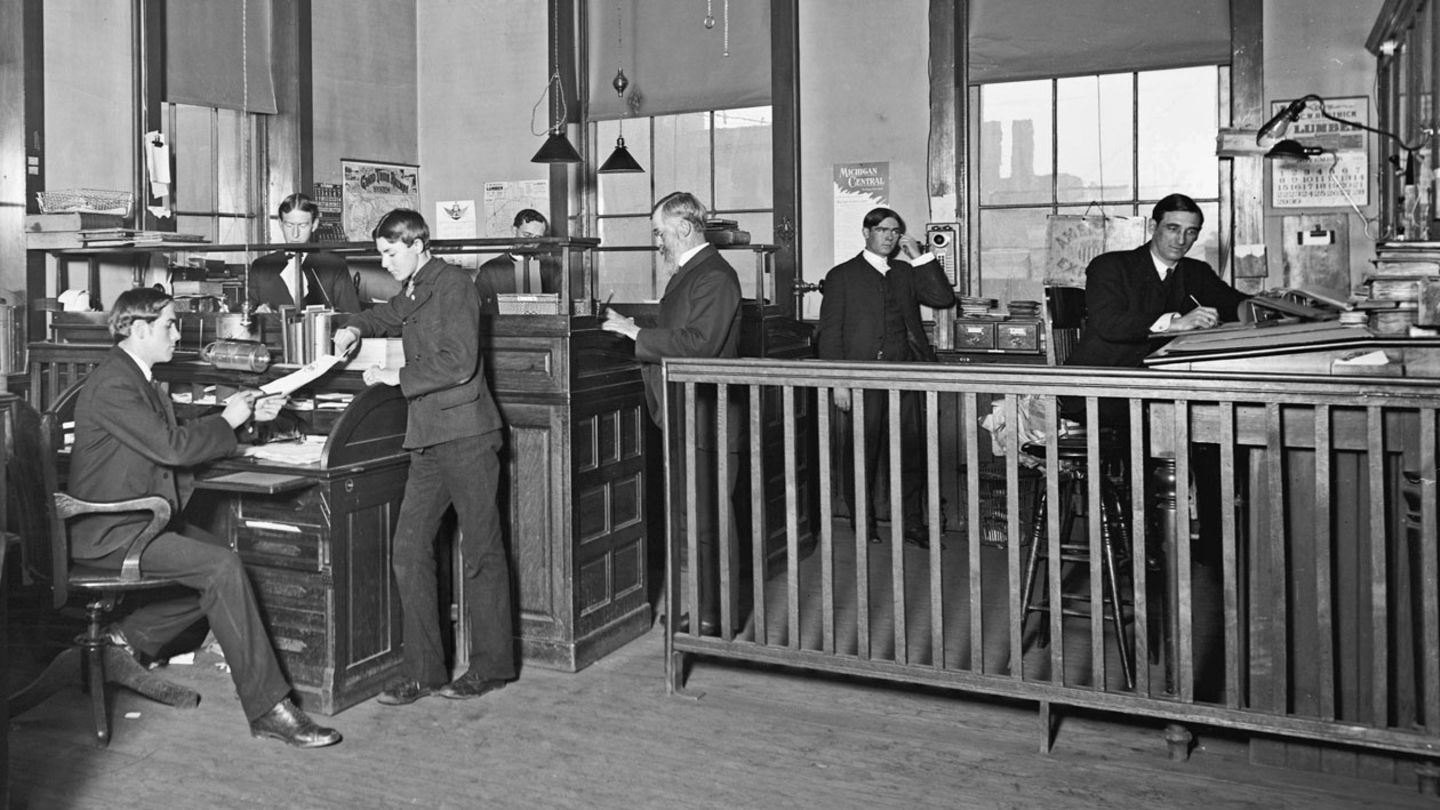A well-tailored suit or a classic costume are the traditional items of clothing in the job. But how did it happen? And: why has that changed so little?
Click, clack, click, clack – the noise that high pumps with tiny heels make in office corridors is unmistakable. Just like the “slack, slack, slack” from flip-flops. Or the screeching, bright squeaking of new sneaker soles on freshly polished floors.
As different as the tones are – for many people they are part of everyday working life. Because strict uniformity only prevails to a limited extent. Our workwear has changed rapidly, especially in recent years. At least if you look at the long development towards the classic business look.
Occupational groups were quickly recognized by their work clothes
In Europe, the “trend” started in the 17th century, reports “Fast Company”. At that time, lawyers, civil servants and skilled workers (not craftsmen!) Began to work in offices in large metropolises such as London, Paris and Amsterdam. That was new – before these people had worked from home. Stiftung Warentest Arbeitsrecht_9.14
In London, the Old Admiralty Buildings were the first office buildings to be built by the Royal Navy for the storage of documents from 1726. And with this development, men’s clothing also changed to a very distant version of the modern suit. In the 17th century, men wore trousers mainly as knee-length breeches, plus a shirt, often with lace around the cuffs and on the collar, which was also to be tied (as an early forerunner of the tie). There was also the vest (back then it was more of a doublet) and a cape. The clothing ensured mobility, the fabrics and decorations used showed wealth and power – in contrast to work or guild clothing.
For centuries, many professional groups were recognized by their clothing. A twofold benefit for people: On the one hand, the clothing was linked to the respective job description and was therefore practical. On the other hand, clothing was also a characteristic of belonging.
Industrial revolution in the clothing industry
With the industrial revolution, clothing also changed, because cotton fabrics were suddenly readily available and therefore cheap. In the early 19th century, tailors began selling off-the-shelf clothing and no longer just making it to measure. The fashion in Victorian England (1837-1901) was strict: restraint and prudery were celebrated, individuality rejected. The result was strict cuts, close-fitting, calf-length frock coats and vests. The upper class preferred the top hat, the working class preferred the bowler hat from the 1850s onwards. From the 1860s, men began to wear wider neckties with bow knots or a pin attached. The frock coat became shorter (to knee length) and was worn for business purposes. Ten years later, the frock coat became even shorter and the three-piece suit became popular. Team work Effektiv_12.20
Not only the mass production of clothing and the department stores in which the goods were sold were decisive for the rapid change in fashion, but also fashion magazines that made the latest craze accessible to the general public.
Pocket watches and frock coats
Even after Queen Victoria’s death, men’s fashion remained dark and heavy, reports “Fast Company”. Europeans had a great love for frock coats, which were worn over vests with pocket watches. This clothing also symbolized the position of the wearer – expensive fabrics showed that the wearer was wealthy. This clothing was in stark contrast to the leisure suit, which should only be worn for the time away from work. But the suits were popular because they could be bought for less than $ 30. And they still looked neat – and so they were increasingly worn in the professional environment.
During this time, more and more women began to work. They were given strict guidelines on how to dress for the office. A female variant of the suit became modern, with a skirt and matching hats, gloves, bags and shoes. Ideally in dark colors – so that stains cannot be seen so easily, fashion magazines.IBM Büro, recommended at 8 p.m. at the time
With the First World War, fashion changed. Wristwatches that were given to soldiers replaced the pocket watch. During the Second World War, men’s jackets were changed to save fabric: double-row became single-row. The trousers, too, which had previously been cut quite loose and bulky, became narrower. After the war, John F. Kennedy competed in a suit in a TV duel against Richard Nixon and wore a jacket with only two buttons. He did not wear a hat when he was inaugurated. The fashion changed again.
Colorful polyester clothing
After brightly colored suits made of polyester and even more brightly colored shirts (the market leader in the USA sold all colors from the 1960s to 1970s – just no white shirts), the “Power Suits” came in the 1980s, i.e. massive, mostly double-breasted suits with massive Shoulder pads. The latter was also worn by women. And so the business fashion of the 1980s seemed a little brutal. This trend was broken with the designers Donna Karan and Giorgio Armani, they opened the door for what we now call “business casual”.
In the meantime, a small revolution in business fashion seems to have broken out. Because for the first time since the early beginnings of the suit, it is not worn in variations and modifications, but radically replaced by newer, younger clothing. The trend, which certainly began in the world of start-ups, does not stop at well-known traditional companies. In spring 2019, the investment firm Goldman Sachs announced that the company’s strict dress code was being relaxed. “Goldman has a broad and diverse customer base around the world and we want all of our customers to be comfortable with our teams,” said a memo. Employees should now dress “in a way that suits the expectations of the customers.” Nostalgia in the office: things that disappear 3:45 pm
But even relaxed dress rules do not necessarily lead to more casual clothes, so the statement at Morgan Stanley. The “casual everyday” has been in effect there for a long time – and yet the bankers still wear suits. They fear that clothing that is too comfortable will make it clear that they will have no customer contact that day – and that they will block their career path.
Fast Company reports a recent study that reveals problems with the exact opposite. According to this, almost half of the managers surveyed stated that their employees were dressed too casually. Around a third of the executives complained about “too much skin” in the clothing style of their team members.
Jane Stock is a technology author, who has written for 24 Hours World. She writes about the latest in technology news and trends, and is always on the lookout for new and innovative ways to improve his audience’s experience.




